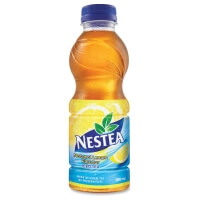Market research reports predict accelerating growth in ready-to-drink (RTD) tea and coffee with both the Beverage Marketing Corp. (BMC) and Grand View Research releasing optimistic projections through 2024.
“RTD tea has performed fairly strongly for the past six years,” according to BMC’s “Ready To Go” report. The study, released last week with projections through 2020, examines the total U.S. tea market with a focus on ready-to-drink tea. Tables show growth by region, advertising expenditures, and demographics.
Grand View Research estimates the RTD tea and coffee market globally will be $116 billion by 2024. “The global RTD tea and coffee market size was $71.43 billion in 2015 and is expected to increase exponentially on account of health benefits provided by these drinks,” according to Grand View.
The “Ready to Drink (RTD) Tea And Coffee Market Analysis” assesses growth by product (RTD tea, RTD coffee), by distribution channel (supermarkets/hypermarkets, convenience stores, food service), by packaging (canned, glass bottle, PET bottle), and by price segment (premium, regular, fountain).
Key findings include:
RTD tea will be the dominant product segment with a demand of more than $84 billion globally by 2024. The enhanced health benefits coupled with increased demand for flavored ice teas are expected to drive market growth.
Regular price segment products are expected to experience high demand owing to various flavors and economical pricing of the product. The global market value for regular price segment in 2015 was more than $27 billion.
The foodservice segment is expected to be the fastest-growing distribution channel at a combined annual growth rate (CAGR) of 6.5 percent from 2016 to 2024. A rising trend of restaurant dining coupled with the popularity of cafes and snack parlors is expected to drive market demand. High availability of the product in remote areas is expected to propel market growth over the forecast period.
The BMC report explains that “the late 1980s and early 1990s saw the explosion of premium hot-fill brands such as Snapple, which were packaged in glass bottles and sold one at a time in down-the-street outlets. The innovations of Snapple—still entirely relevant three decades later—included use of a wide-mouth 16-ounce glass bottle that until recently still was the default packaging choice for high-end beverage newcomers and an all-natural formulation that eschewed the use of preservatives in favor of pasteurization (the so-called hot-fill process).”
“Specialty teas such as green tea, herbal tea and chai that have provided verve to the hot tea market, have also found their way into the RTD tea segment. These so-called super-premium teas emerged in part to fill a vacuum in the existing marketplace,” according to BMC. The researchers cautioned that “As in other beverage segments where consolidation has taken place, new RTD tea entrants may need to find an unfulfilled niche in an attempt to differentiate themselves.”
Source: Beverage Marketing Corp., Report Buyer, Grand View Research


BÀI VIẾT LIÊN QUAN
Drought in Kenya is threatening the Tea Production.
Battling Cancer with Tea
Ready-to-drink Beverages increase steadily over $100 billion
India Tea Export is hurt by tensions with Pakistan and devalued Pound
Vietnam’s Tea Export Prices Half of World’s Average
Kenya: Tea Exports Down As Pakistani Sales Drop
Trade volumes up 17.7 per cent, highest in five months – KNBS
Kenyan tea glut pushes prices to multi-year lows, trade body says